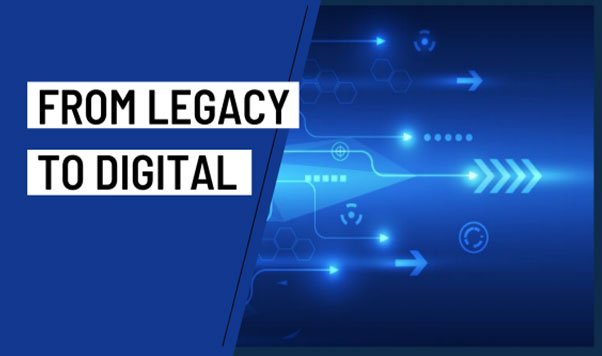The Core Banking Journey - From Legacy to Digital
Updated On : June 2021
According to Gartner, a core banking system is a back-end system that processes daily banking transactions and posts updates to accounts and other financial records.
Legacy core banking has been the mainstay of banks all over the world and they have spent millions of dollars to maintain these systems which usually interface with tens or hundreds of applications. Core banking software handle huge volumes of transactions and are expected to function without interruption, and they have traditionally been reliable.
While failures are rare with core banking systems, with the arrival of digital banking, cloud, and APIs and the sustained development of the fintech sector, the way banking products and partnerships are constructed underwent a significant shift. Traditional core banking falls short in providing the required customer experience to acquire, retain and grow customers.
Some of the major issues faced by banks due to a traditional legacy core architecture are:
- Processing transactions in real time
- Leveraging partnerships with fintech companies
- Poor digital customer experience without flexibility
- Complexities during platform integration after M&As
- Scaling infrastructure needs as required
- Launching new features frequently
- Risk and compliance management
- High maintenance cost
- High reliance on vendor
To tackle these issues, a new breed of core banking systems emerged with faultless transaction processing, which are cloud-ready and open-banking compliant, and have very advanced architectures that make frequent feature releases smooth. They also offer great customer experiences are reasonably priced to replace core banking.
As banking continues to be disrupted, a lot of banks are already setting in motion their strategies to transition to a new system. Banks are realizing the importance of digital transformation and the critical aspect of selecting the right strategy.
Adopting a new digital core banking system
Consumer behavior has changed with demand for services that are personalised and efficient. They seek access to services and solutions digitally, anytime from anywhere. The bank’s focus is on meeting the challenge and delivering as per customer’s expectations. As banks prepare themselves for their core banking transformations, they focus on taking a digital-on-top approach to deliver new innovations without casting out legacy investments.
A future-proof digital core banking system is essential to meet changing customer needs, speed up innovation and swiftly respond to the changing environment of technological evolution. Banks need to establish a more holistic customer experience approach and digital transformation strategy. They need to chart the right roadmap based on factors like the requirements of the stakeholders, existing core system’s capacity, goals of the bank, etc.
Benefits of a digital core banking system
- Marketplace relevance – By being digitally able and capitalising on the competencies of the bank, the core system will enable digital competitiveness by using new and emerging technologies like artificial intelligence (AI), machine learning (ML), blockchain, and others.
- Better utilization of human resources - Traditional legacy systems are complex and difficult to manage, navigate and understand. New age employees are used to friendly and intuitive interfaces and modernising the core system will cut down the need for training, help to save time, reduce dependency on expensive talent for legacy technology skills, and optimize cost-per-hire.
- Enhanced services - Clients today expect flexibility, ingenuity, and omnichannel experience from their financial providers. Modernizing the system enables process simplification, personalized user experiences and better cross-selling of products, leading to enhanced service levels and customer satisfaction.
- Enhanced security - Outdated systems are vulnerable to cyberattacks, allowing malicious players to remotely take over systems. Most legacy systems do not have vendor support any longer and miss out on critical security patches, upgrades, and new functionalities. This leaves the system open to security breaches that can prove very costly for a bank’s reputation.
- Cost-efficient - Legacy systems are known for their hidden costs that prove expensive for a bank. A digital core banking system can significantly bring down the cost of operations and service delivery.
- Becoming future-ready - With the future of banking defined by emerging technologies, dynamic business models, and rapidly changing customer expectations, it is crucial to drive system transformation. A microservices based architecture and robust API framework is necessary for third party integration. Hence, having an up-to-date digital system will also help in easy-to-maintain upgrades in the future.
Conclusion
With regular changes in banking business practices, legacy core banking systems have been constantly modified to deal with the changing landscape, and this has led to the systems becoming more complicated to manage. A lot of banks have also adopted an app or website with features like chatbot or Al, but real digital transformation can only happen when digitization is used throughout a bank. To be truly digital, banks need to invest in modernising the core system to meet higher client expectations and adapt to changing environments, some of which may not be presently known.
A core banking system designed and build digitally can make a difference between success and failure for most banks. With a modernised system, regardless of the size and location, banks will be able to successfully address the increasingly demanding needs of customers and regulators, operate efficiently and cost effectively, and launch new products swiftly.
Leave Comments :
Latest Blog
-
 Driving Rural Financial Inclusion with Lending Management Software Updated
On : June 2025
Driving Rural Financial Inclusion with Lending Management Software Updated
On : June 2025
-
 The Rise of AI in Credit Risk and Lending Software Updated
On : July 2025
The Rise of AI in Credit Risk and Lending Software Updated
On : July 2025
-
 Green Lending: ESG Metrics Embedded in Lending Software Updated
On : July 2025
Green Lending: ESG Metrics Embedded in Lending Software Updated
On : July 2025
-
 The Role of Blockchain in Modern Lending Management Software Updated
On : July 2025
The Role of Blockchain in Modern Lending Management Software Updated
On : July 2025
-
 Ensuring Compliance in Loan Origination Software Updated
On : June 2025
Ensuring Compliance in Loan Origination Software Updated
On : June 2025



Comments :
* lottery jackpot hack
* Bitcoin account recovery phrase
* recover any wrong address btc payment transaction
* purchasing of data and email viruses
* sending viruses to company database portal
* Bitcoin investment
* Recover Stolen/Missing Crypto/Funds/Assets
Email address blankatmcard@myyahoo.com
WhatsApp:+17068448917
WhatsApp: +1 (807) 907-2687
Email: lordmeduzatemple@hotmail.com
whatsapp +2348136482342
you can be to get the new PROGRAMMED blank ATM card that is capable of
hacking into any ATM machine,anywhere in the world. I got to know about
this BLANK ATM CARD when I was searching for job online about a month
ago..It has really changed my life for good and now I can say I'm rich and
I can never be poor again. The least money I get in a day with it is about
$50,000.(fifty thousand USD) Every now and then I keeping pumping money
into my account. Though is illegal,there is no risk of being caught
,because it has been programmed in such a way that it is not traceable,it
also has a technique that makes it impossible for the CCTVs to detect
you..For details on how to get yours today, email the hackers on : (
atmmachinehackers1@gmail.com